
[325] Sterna hirundo, Common Tern
Introduction
Sterna hirundo, the Commom Tern, is a fairly common summer visitor to Britain, generally breeding on islands in inland lakes but travelling to more tropical climates over winter.
It is very difficult to tell apart from its close relative, Sterna paradisaea, the Arctic Tern.
Sterna hirundo is the most common tern seen in Britain but, unlike many other similar cases we have seen, it is never called just a Tern.
Taxonomy
Kingdom – Animals
Phylum – Chordates
Class – Aves (Birds)
Order – Charadriformes
Suborder – Lari (Gulls, Terns, Skuas and Auks)
Family – Laridae (Gulls, Terns and Skimmers)
Subfamily – Sterninae (Noddies and Terns)
Tribe – Sternini (Terns)
Genus – Sterna
Scientific Name – Sterna hirundo
Name
Tern comes from Scandinavian roots from þerna, which somehow meant either a tern or a maidservant.
Sterna comes via Old English stearn from the same roots. As you may remember, Hirundo is the genus name of [175] the Swallow. As a species epithet it is a noun in apposition, so it has no chance of retaining its capital letter that it would have as a genus name. (The birds are superficially similar. Both have forked tails but the Common Tern is a lot larger.)
Description
There are about forty species of terns. They are mostly white or grey birds with long pointed bills that they use to catch fish. They have worldwide distribution and make long-distance migrations. Their closest relatives are gulls.
In breeding plumage, the Common Tern is white underneath with a very pale grey back. The top of its head and back of the neck are black and its pointed bill is red with a black tip. Its very short legs are red.
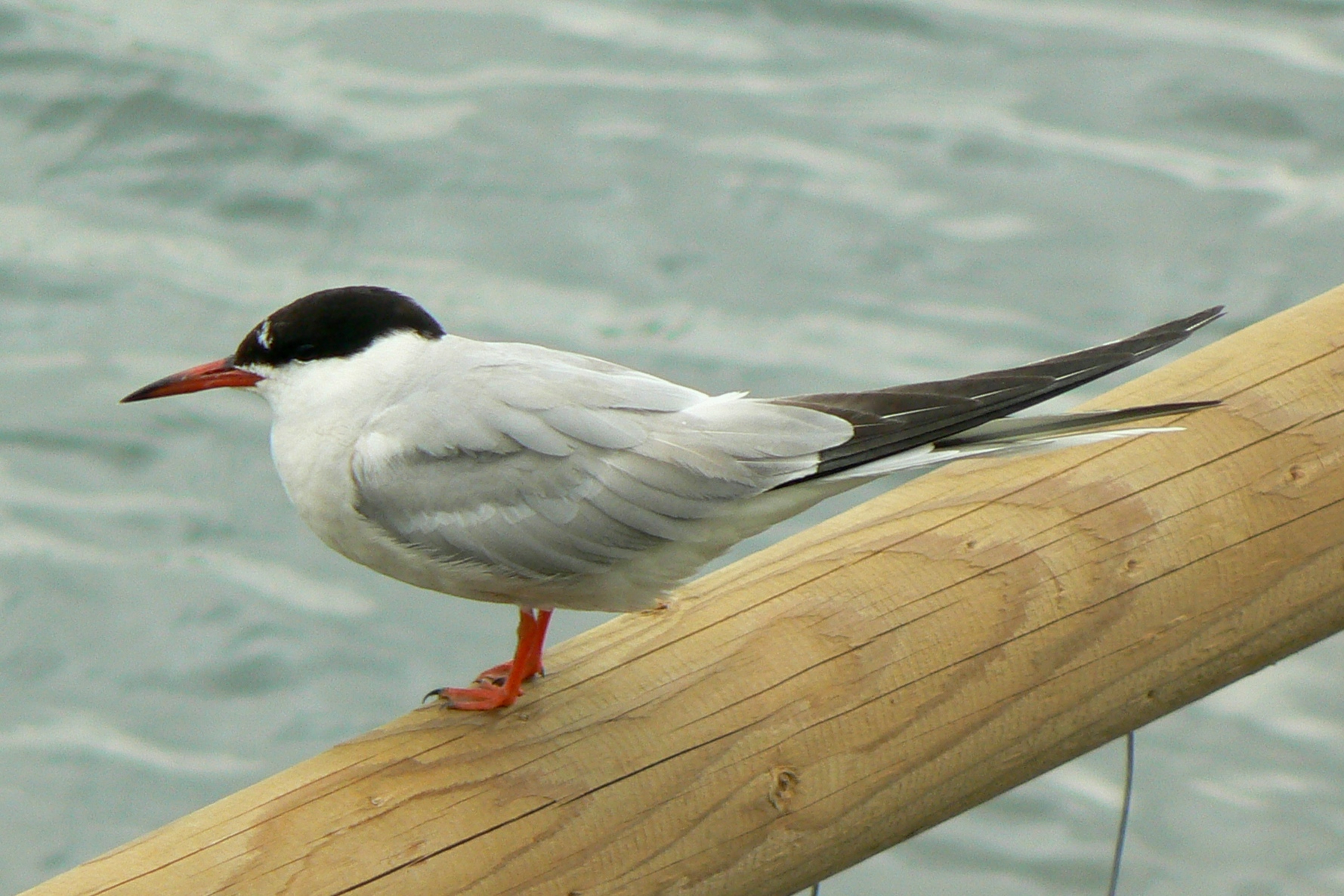
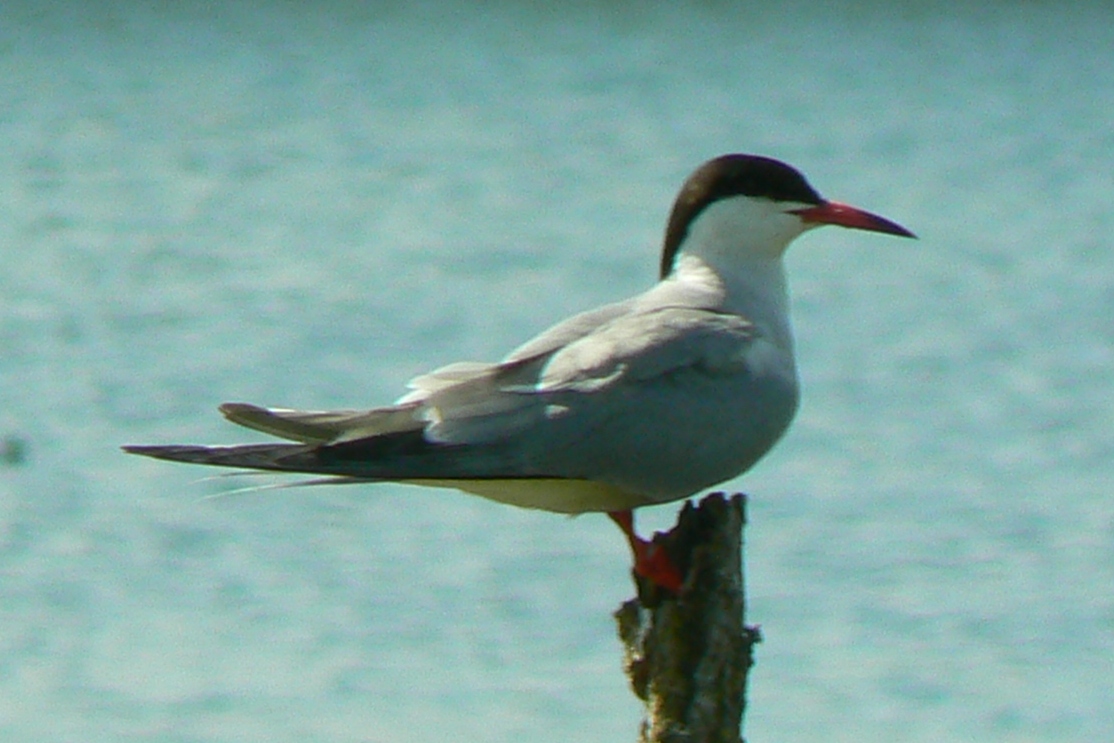

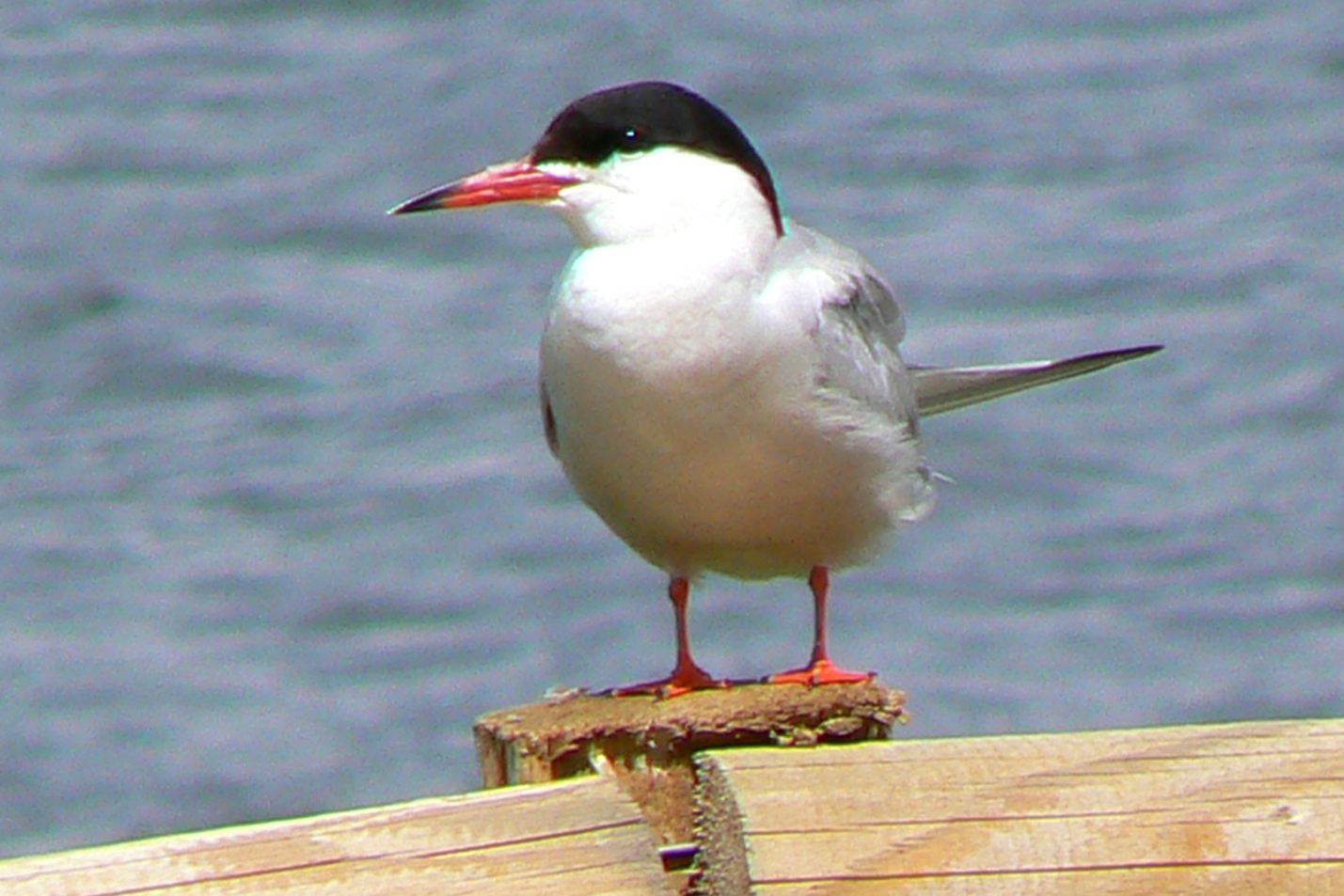
In non-breeding plumage (which is never seen in the UK) its forehead turns white and the bill and legs become all black
They come to Britain to breed at inland lakes. They nest on flat surfaces near water such as islands in lakes and take easily to rafts put on to lakes to attract them at wildlife reserves.
They spend much of their time circling the lake and hunting for fish. They sometimes hover perfectly, which can make them relatively easy to photograph in flight. They will plunge dive to catch fish.
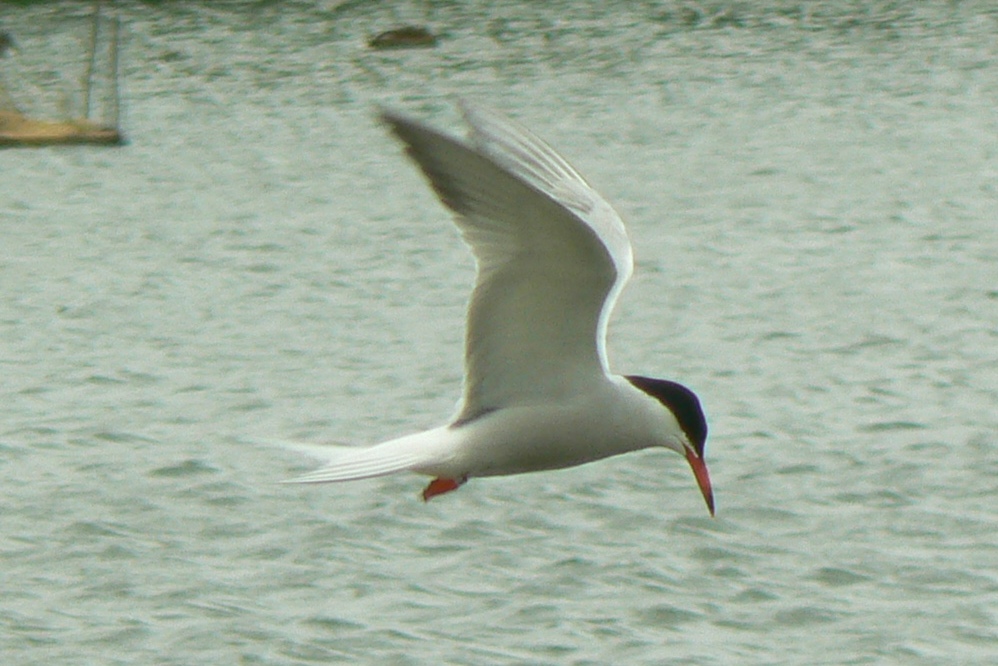


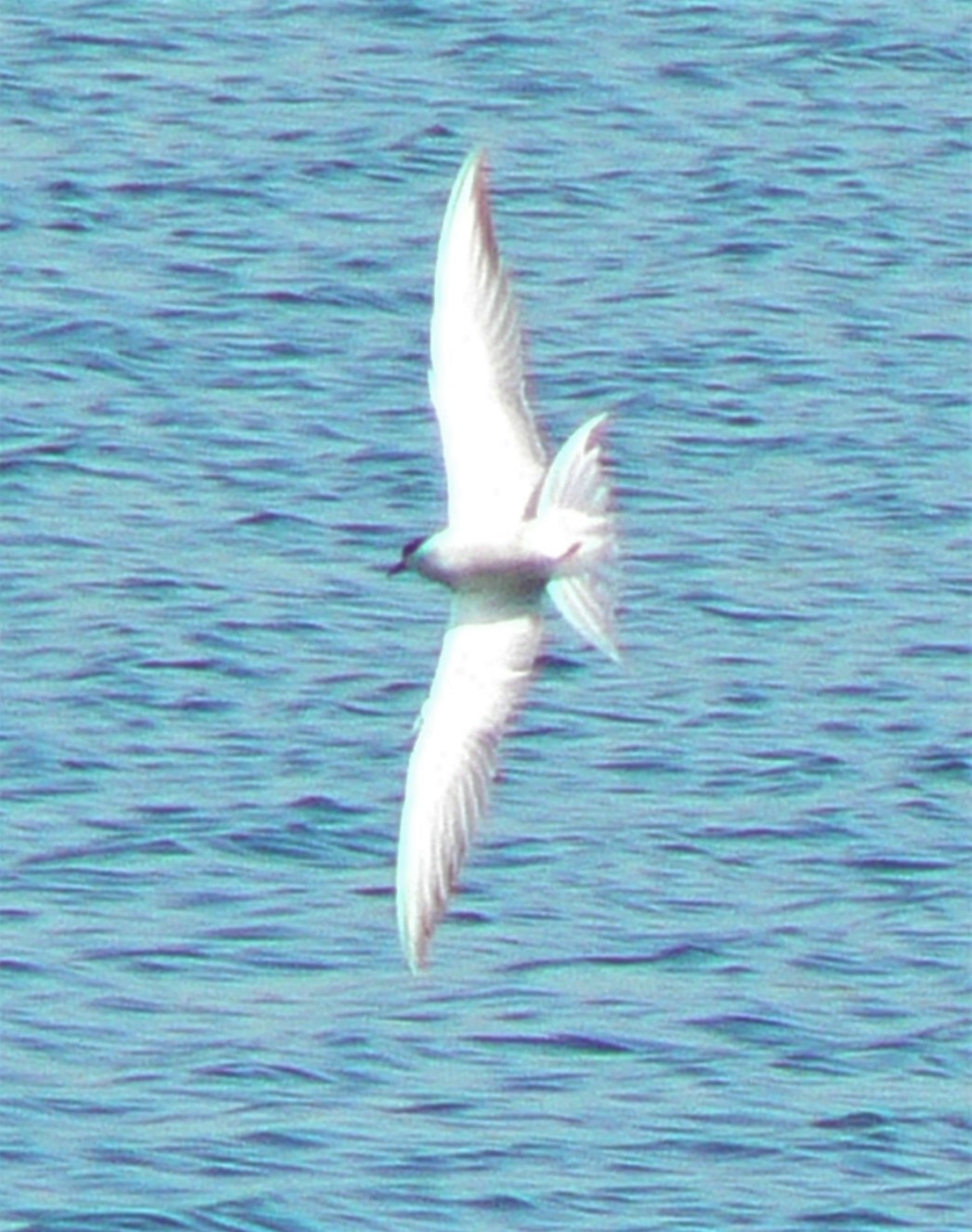

Birdwatchers will sometimes identify a bird, especially in flight, as a ‘Commic Tern,’ because the Common Tern is so hard to distinguish from its relative Sterna paradisaea, the Arctic Tern. The Arctic Tern is much rarer in the south of the UK as it keeps to more Arctic and Antarctic regions (with a long migration between the two!). Its most obvious distinguishing features are a darker red bill with no black tip and even shorter legs.
Habitat
The Common Tern visits northern Eurasia and the northeast parts of North America. It is widespread over the UK. For the rest of the year our visitors return to the coasts of eastern and southern Africa, while others go to other southerly coastal locations.
Other Notes
Terns have very localised distributions. I see them in the Cotswolds, in wetland areas such as Slimbridge WWT, Frampton Lakes and the Cotswold Water Park. In these areas, the Common Tern is the most common and the Arctic Tern is much rarer.


See also
Overall, in the UK we have about the same sorts of numbers of Common Terns, Arctic Terns and Sandwich Terns, with much lower numbers of Roseate Terns, Sterna dougallii, mostly in northern, eastern and southern coastal locations.
- Sandwich Tern
This bird, until recently known as Sterna sandvicensis, is now Thalasseus sandvicensis. [Thalassa is the Ancient Greek word for the sea. As a species epithet, sandvicensis usually refers to Hawaii, formerly known as the Sandwich Islands, as we have seen with [056] the Nene, Branta sandvicensis. But the Sandwich Tern gets its name from Sandwich in Kent.]
Its bill is long, pointed and black with a small yellow tip, and the black cap has a crest to the rear. It nests on tightly packed colonies in a few locations in the Northern Hemisphere including rafts on lakes in Brownsea Island near the South Coast.
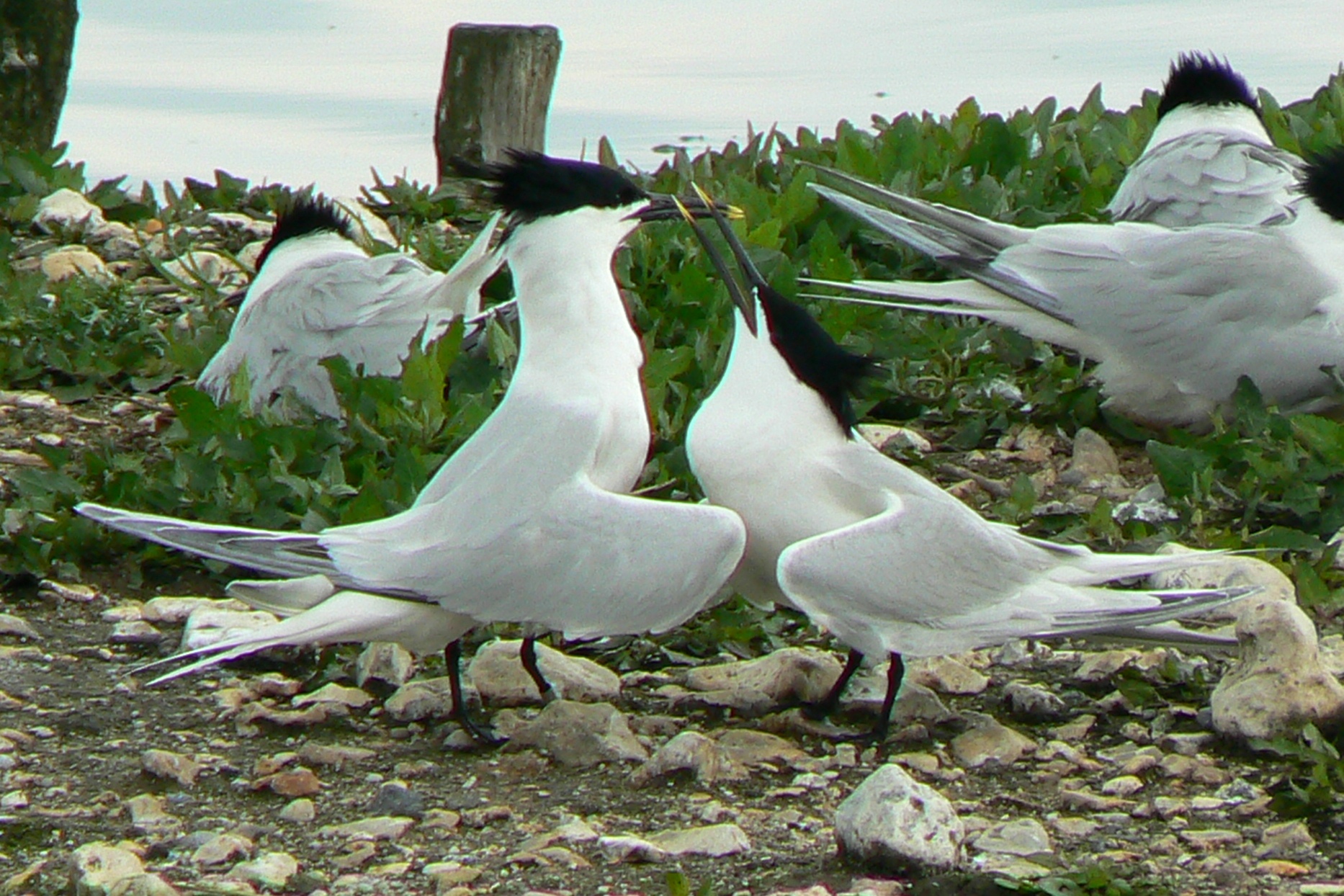

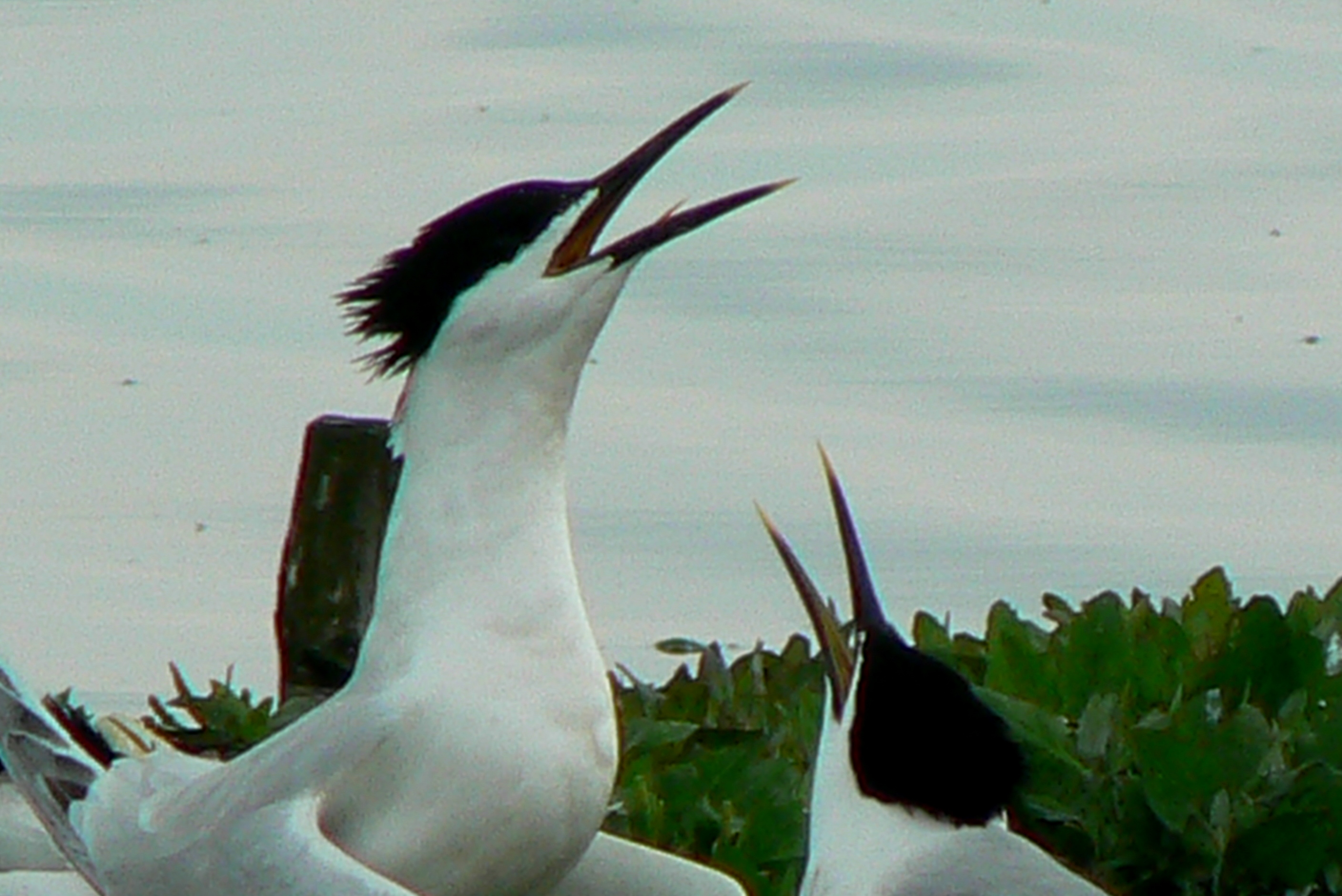

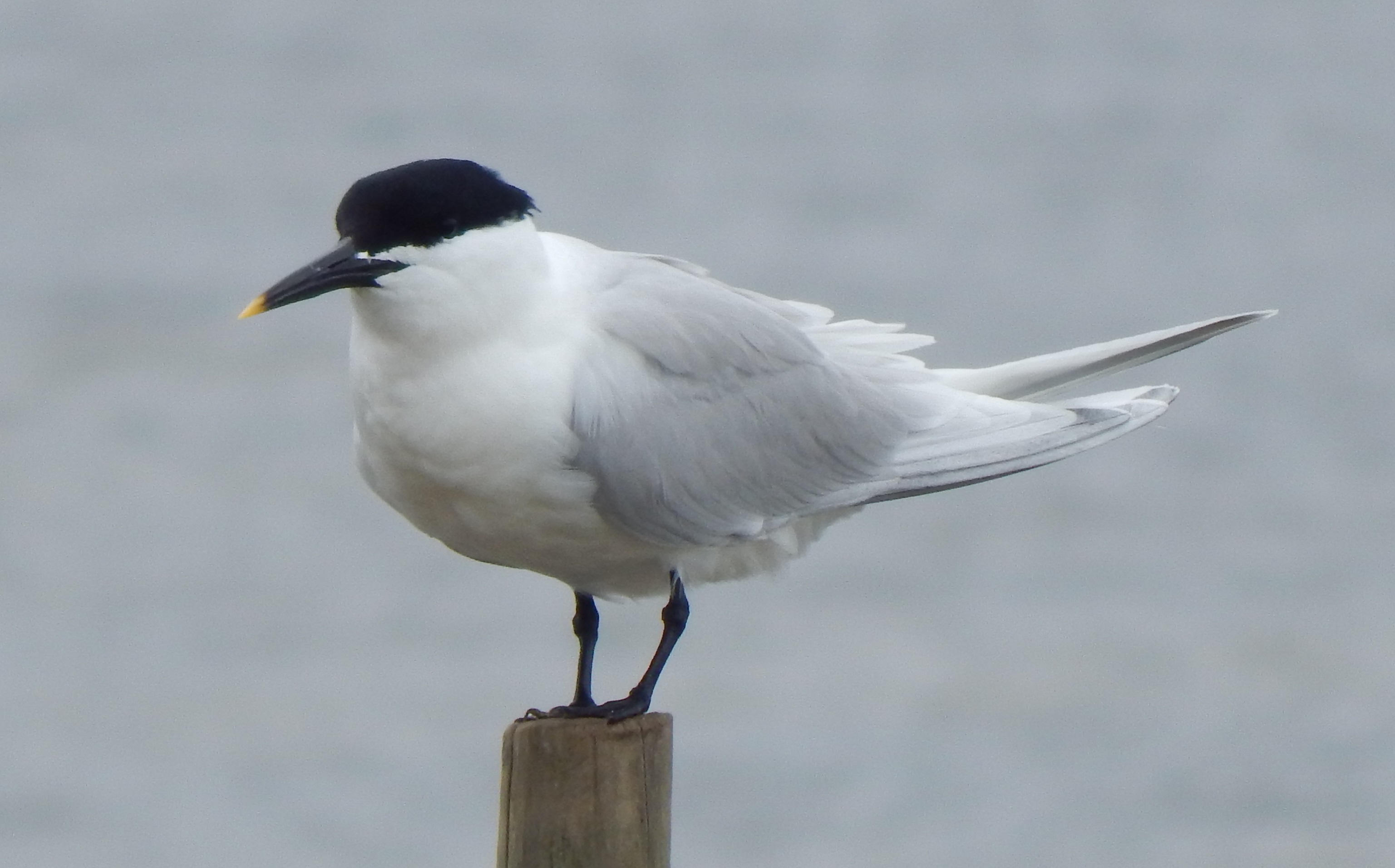
- Black Terns
These birds, Chlidonias niger, are mostly darker greys and are seen only as occasional passage migrants.
